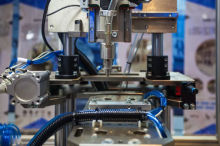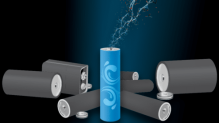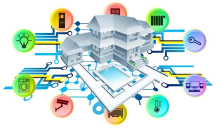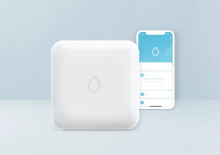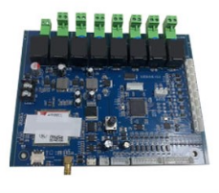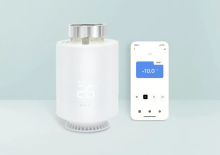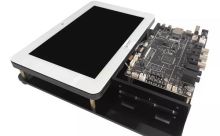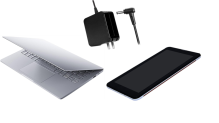How do you add a wireless connection to an older building
With the expansion of IIoT, some traditional buildings also need to deploy IIoT network. However, in the days when these older buildings were built, no one was concerned about wireless data transmission. Walls, floors, and ceilings are often reinforced with wire mesh, rebar, and heavy steel beams, which effectively block high-frequency radio signals and thereby block network access to certain equipment.
In some cases, penetrating the wall to connect the signal may be sufficient, but a forklift or other heavy equipment parked near the wall can temporarily block the connection. This poses problems for high-frequency wireless protocols such as Wi-Fi and Bluetooth. Trying to diagnose these intermittent border connections is a networking technician's nightmare.
As a result, these buildings may need to add additional routers, network switches, and gateways to their facilities. This not only increases network complexity, but also costs, maintenance, and interoperability issues.
This is especially problematic for remote sensors that may be located hundreds of meters from a gateway or router. However, some sensors, such as environmental sensors, do not require continuous transmission of their status over high-speed wireless networks and can easily use sub-ghz frequencies without any network bottlenecks or contention conditions.
For these situations, sub-ghz low power LoRaWAN wireless protocol is a reliable choice. LoRaWAN transmits at frequencies ranging from 902 to 928 MHz (MHz) in the United States and 863 to 870 MHz in the European Union. The technology is aimed at low-power, low-data rate sensors that do not require a continuous data connection. What's more, LoRaWAN's lower operating frequency band makes it suitable for older buildings with thick walls, as the transmitted signal easily penetrates wood, drywall, concrete and steel.
However, if an industrial facility uses Wi-Fi, Bluetooth, and LoRaWAN, it is important to integrate all three protocols in a way that ensures reliability and interoperability, while reducing maintenance costs.
IIoT LoRaWAN configuration
Typically, Wi-Fi signals are connected to a central hub in an industrial facility via a network switch or router that converts data via wired Ethernet. This conversion is relatively easy because Wi-Fi and Ethernet are compatible protocols. However, LoRaWAN is not compatible with Ethernet, so it cannot simply pass data. In order for LoRaWAN data to reach the central hub, wireless LoRaWAN data must first be received through a compatible gateway. LoRaWAN compatible gateways are configured to forward data over a backhaul connection to a Windows or Linux central hub running LoRaWAN Network server (LNS) applications. The LNS processes the data and exposes it to the hub's operating system through the application programming interface (API) available to the application software.
Multi-tech Systems' MTCDT-247A-915-US-EU-GB Multi-protocol gateway is a LoRaWAN multi-protocol gateway designed for rugged industrial facilities. The gateway is oriented towards industrial environments and can operate in a temperature range of -30°C to + 70°C, and up to 90% (no condensation) relative humidity.
Mtcdt-247a-915-us-eu-gb is configured for LoRaWAN US frequencies and cannot be used in other regions. Mtcdt-247a-915-us-eu-gb supports Wi-Fi, Bluetooth and LoRaWAN.
The Conduit gateway supports the LoRaWAN network on the 915 MHz band in the US. It uses a browser-based interface to configure the LoRaWAN packet forwarder to point to the LNS. LoRaWAN sensors in industrial facilities can easily connect to Conduit gateways hundreds of meters away, or even through the reinforced concrete walls and floors of older buildings. But even in modern buildings, there are dead ends, places where wireless signals cannot reach. This is always a problem for large buildings and is unavoidable. Therefore, it is recommended to have at least two LoRaWAN gateways to ensure full coverage. When the same packet needs to be received from two or more Conduit gateways, the LNS application resolves all issues.
The browser interface can also be used to configure Wi-Fi access points. For 802.11a/ B/G/N protocol, MTCDT-247A-915-US-EU-GB can provide 2.45 GHz and 5 GHz Wi-Fi access points for industrial facilities. The gateway comes with a Wi-Fi antenna.
In addition, the browser interface can be configured with Bluetooth access points to connect to compatible Bluetooth devices. For normally open high data rate Bluetooth devices, classic Bluetooth is supported. Low power Bluetooth 4.1 is supported for battery-powered Bluetooth devices such as tablets, laptops, and certain sensors.
The RJ45 jack on the back provides a wired 10/100BASET Ethernet network connection and backhaul to the main server.
Mtcdt-247a-915-us-eu-gb also supports the Global Navigation Satellite System (GNSS). This can be used for global positioning, but more importantly, GNSS provides an accurate timebase for LoRaWAN packet timestamps, which is a requirement of the LoRaWAN standard and is designed to ensure message synchronization.


